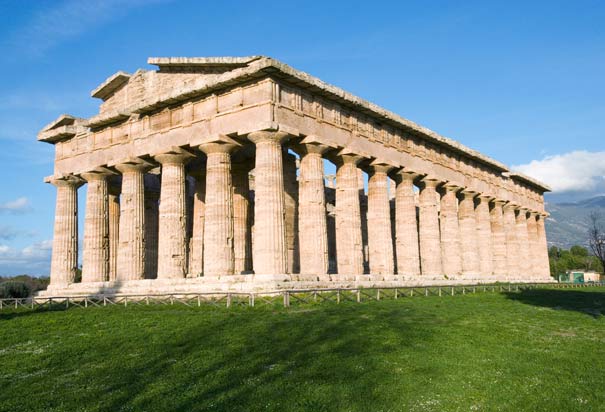Common materials of ancient Greece architecture were wood, used for supports and roof beams; terracotta, used for roof tiles and ornaments; limestone and marble, used for columns, walls, and upper portions of temples and public buildings; plaster used for sinks and bathtubs; unbaked brick, used for walls, especially for homes; and metals, especially bronze, used for decorative details. Architects of the Archaic and Classical periods used these building materials to build five types of buildings: recreational, domestic, funerary, religious or themes.
 The temple was the most common and best-known form of Greek public architecture. Every Greek town had a theatre. The theatres were used for public meetings and dramatic performances. Greek towns also needed at least one bouleuterion or council chamber, a large public building, which served as a courthouse and as a meeting room for the town meeting.
The temple was the most common and best-known form of Greek public architecture. Every Greek town had a theatre. The theatres were used for public meetings and dramatic performances. Greek towns also needed at least one bouleuterion or council chamber, a large public building, which served as a courthouse and as a meeting room for the town meeting. What is the different between theatre and bouleuterion? The different is theatre usually just used for dramatic performance, but bouleuterion usually used for a meeting room, give people a place to call a meeting.
